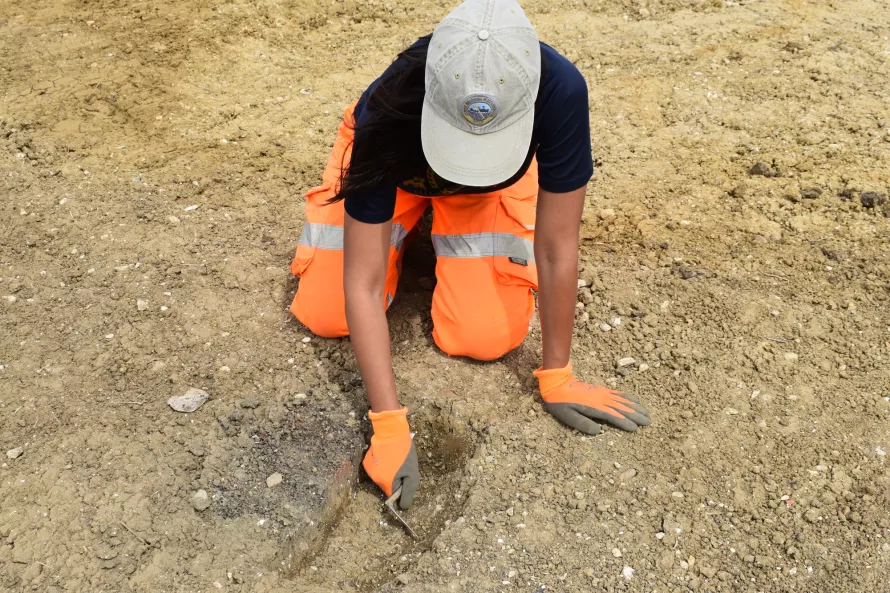The sun is a fickle friend to the humble archaeologist. At first, it heralds a welcome change from the wind and rain but you can have too much of a good thing. When the sun is shining, the clay we’re digging at Wintringham soon becomes baked as hard as the pottery we’re finding! We archaeologists are very rarely content with the weather, and yet we crack on regardless.
Such cracking on this week largely consisted of the excavation of various boundary ditches which enclosed quite large spaces of land, such as the Banjo Enclosure mentioned in the last couple of updates. These enclosures likely would have been used to herd livestock, an interpretation based on the large amounts of cow and sheep bones found in the lower layers of the boundary ditches.
The types of bones and where they come from in the animal's body can also be highly informative. Foot bones and skulls are largely waste products of initial butchery, and so may point towards this kind of activity in the area. However, more meat bearing bones, such as long bones and shoulders, are thrown in the rubbish (in this case, the convenient ditch) after actual consumption, and so point more towards areas of dining and settlement. This information is just one piece of the jigsaw we use to try and work out which areas were likely used for livestock rearing and butchery and which were enclosures more for settlement. We will need to wait for our zooarchaeologists (yes, that’s the term for archaeologists who specialise in analysing animal remains!) to review what we’ve found at the end of the excavation.

Stuart holds up a cow jaw bone found at Wintringham.
We’ve also found started to find large amounts of pottery from these ditches, largely Roman in date. James in particular excavated a particularly fruitful feature, with spouted containers and full-rimmed pottery by the bag-full. Most of this seems quite finely made and so again point towards higher-status individuals at this settlement.

A selection of the Roman pots found by James.
However, James' hole kept going deeper and deeper, quickly revealing that this wasn't the ditch we thought it to be. Ever safety conscious, we widened his trench to reduce the chance of the sides collapsing in and dumping nearly a ton of soil onto poor James.
Once the sides had been widened and stepped to prevent tragedy James dug ever deeper into the silt, until he eventually reached the natural clay geology we discussed in the last update, showing the base of this cut feature. By this point, it was considerably deeper than the ditches at any point around the site, forcing us to re-evaluate the situation; what was James standing in? And what was the large slab of rounded stone poking out by his steel-capped boots?
After a surgical yank, the stone was pulled free, and revealed itself to be none other than a half a worked quern stone, worn smooth on one side after years of use. Quern stones were used to grind cereals like wheat into flour. There would be two stones – the top stone of a rotary quern had a hole at its centre for feeding the grain to the grinding surface and a second hole for holding a handle which had allowed it turn. This is further evidence of settlement in the area, of families living their daily lives, baking and eating their daily bread.
The feature it was found in is a whole other mystery. Considering its depth in relation to the ditch and the roundness of its side profile, we have decided it was likely a watering hole cut into the corner of the ditch enclosure, used to water livestock whilst they were corralled. As there was a second, more narrow ditch running alongside this watering hole with much Roman pottery in it and the watering hole seems to have been cut through this ditch, it can be assumed the hole was in use during the Roman period and perhaps even later.
Other posts in this collection
Read our latest posts about the archaeological investigations at Wintringham.

